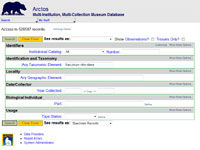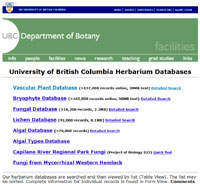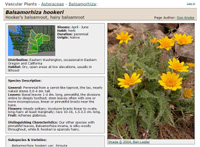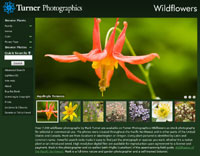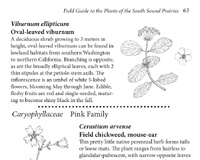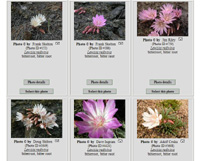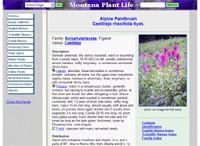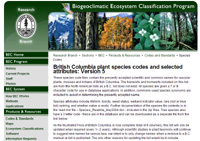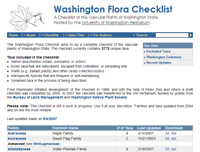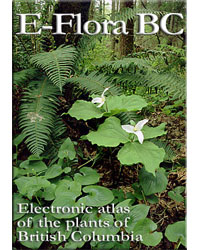
E-Flora BC is a GIS-based biogeographic atlas of the plants of British Columbia that represents new frontiers in information gathering, compiling, visualization and presentation. In taking advantage of the power of the internet and combining it with GIS and statistical analyses, E-Flora BC provides critical information on BC plant species and their ecology. As a "living" atlas of BC plants, E-Flora can be updated on an on-going open-ended basis, keeping key botanical information at our fingertips for use in conservation planning, conservation biology research, and education. The botanical information provided in E-Flora has been compiled from all major botanical sources in the province, representing the work of numerous experts and researchers in the BC flora, in plant taxonomy, in plant ecology and in biogeography.
|
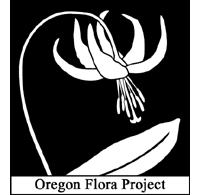
Since 1994, the Oregon Flora Project has been creating a comprehensive resource on the vascular plants of Oregon that grow without cultivation. Founded by the late Scott Sundberg and housed at Oregon State University, the project addresses the 4,516 species, subspecies, and varieties of ferns, trees, grasses, and flowering plants that inhabit Oregon’s diverse landscapes. The Oregon Flora Project uses images, interactive mapping, and descriptive text to convey scientific data to a degree of detail that matches the needs of the user—novice, informed amateur, or professional.Through its collaborative and grassroots nature, the Oregon Flora Project is applying its expertise to complete, curate, and unify botanical information into a resource of great depth and breadth that is valuable to all users.
|
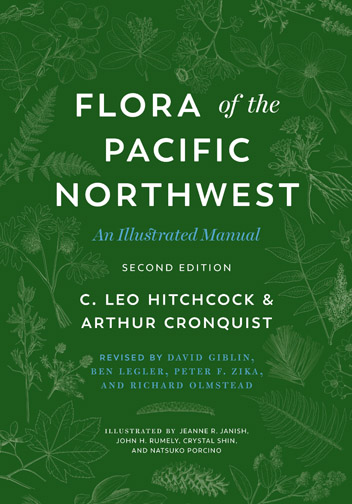
The University of Washington Herbarium at the Burke Museum is producing a new reference manual for Pacific Northwest Vascular Plants, based on the authoritative Flora of the Pacific Northwest published in 1973 by C. Leo Hitchcock and Arthur Cronquist. The original, 730-page, single volume book was designed by the authors to be a portable plant identification manual for professional and amateur botanists. The new Flora will maintain the original's familiar layout, styles, and illustrated keys. Completion of the new Flora is expected to take three years, with a possible completion date of Fall 2016. The new Flora will cover approximately 5,500 taxa, an increase of about 28% over the 4,287 taxa treated in the original.
|





